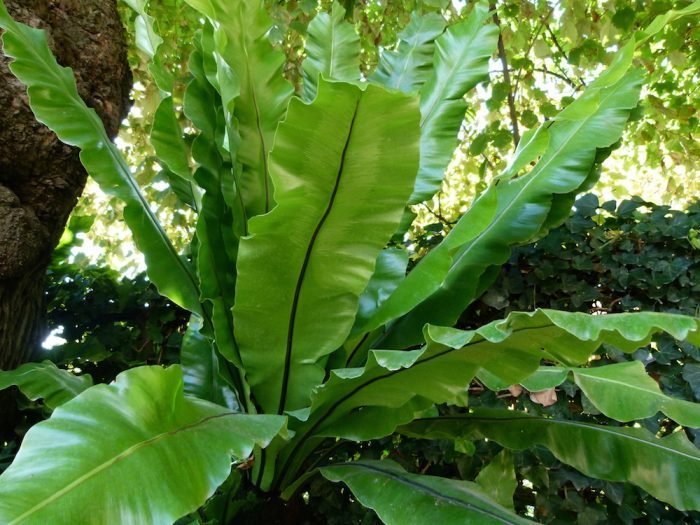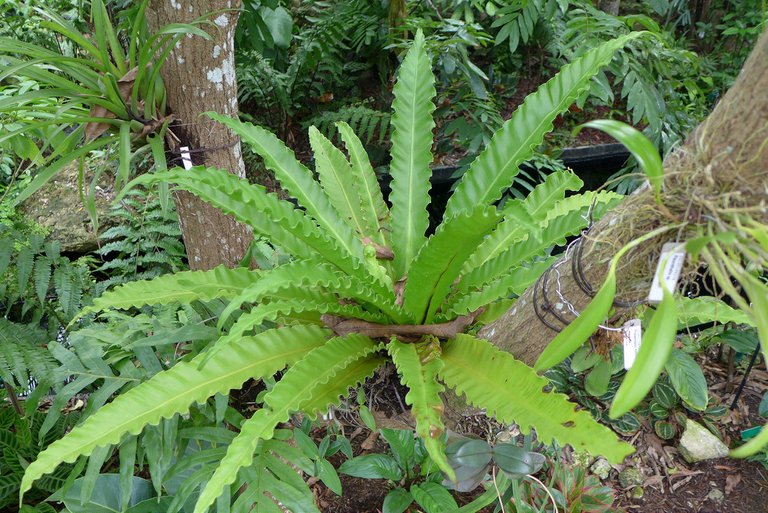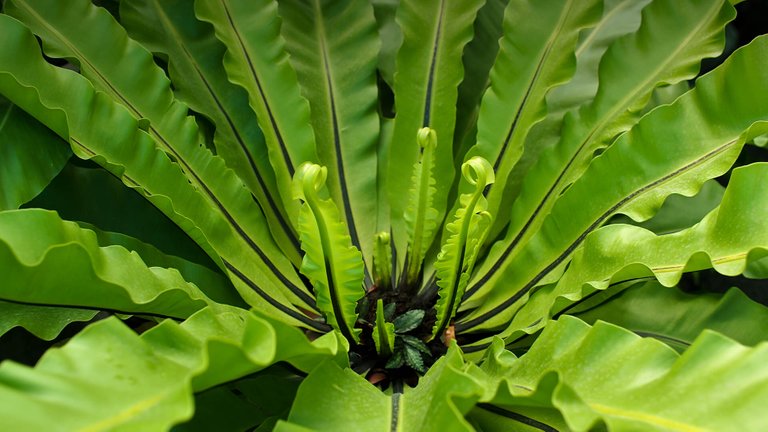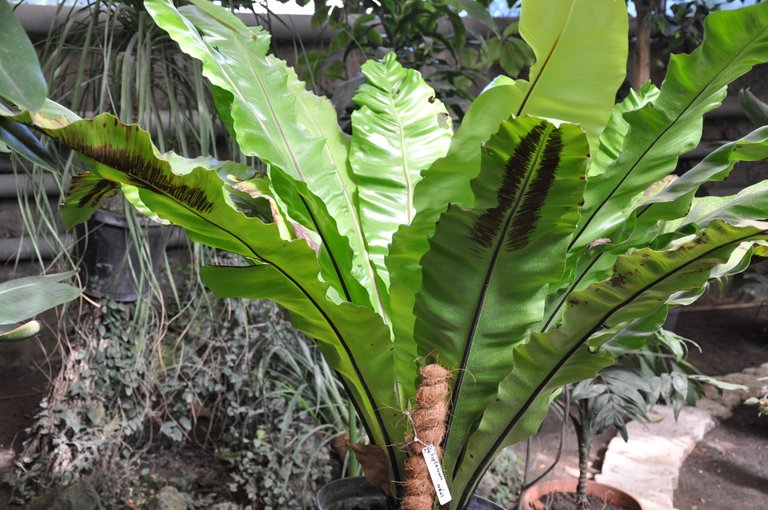
Variant names
Malay: Daun semun, paku langsuyar, paku padan, rumah langsuyar, selimbar.
Chinese: Niaochao jue.
The bird’s-nest fern (Asplenium nidus) is a large, leafy fern commonly found on wayside trees in Singapore, particularly the rain tree. The fern, which grows at the base of large branches, has a unique ability to trap water and develop its own store of humus.

Description
The bird’s-nest fern is an epiphyte plant that can be found in Asia, Australia, and Africa. It has a stout erect rhizome (stem) that bears a rosette of simple leaves (fronds) to form a “nest”. The stem is usually not visible from the top. Beneath the nest of fronds is a large, spongy mass of roots. The nest traps fallen leaves and other debris, which eventually decompose to become humus. When it rains, large quantities of water are absorbed by the sponge of roots. In this way, the plant is self-sufficient in acquiring its food and water, so much so that it provides a habitat for the growth of other ferns and mosses, and even home for small animals.

Usage and potential
Food: The bird’s-nest fern is non-poisonous and occasionally eaten by aboriginal tribes in Malaysia.
Medicine: There are several medicinal uses of the bird’s-nest fern by the Malaysian native tribes. Infusion of the fronds is used to ease labour pains. The leaves can also be pounded in water and used as a lotion to treat fever. Two young fronds can be eaten when they are still coiled as a contraceptive, and tea made from fronds can be used for general weakness.
Content Source
